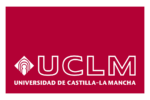The dollar’s status as the leading reserve currency has been called the “exorbitant privilege” of the United States, a phrase coined by former French Finance Minister Valery Giscard d’Estaing in the 1960s. At the time, French officials believed that the world’s appetite for dollars provided cheap financing for U.S. investment abroad. Over time, U.S. trade swung into a sustained deficit, supported in part by global demand for dollar reserves.
Emergence as reserve currency
It is the standard currency for international markets selling goods such as gold and oil (petrol). When writing, the symbol for the American dollar is the dollar sign ($). In 1968, the requirement to hold gold reserves against Federal Reserve notes was repealed. In 1971, the U.S. announced it would not freely convert dollars at the exchange rate with gold. In October 1976, the definition of the dollar in terms of gold was officially removed from statute and the USD and gold no longer had any link. The Gold Standard Act of 1900 repealed the U.S. dollar’s historic link to silver and defined it solely as 23.22 grains (1.505 g) of fine gold (or $20.67 per troy ounce of 480 grains).
What is Hope Florida? Governor, lawmakers spar over $10 million donation
This Congressional Research Service report PDF examines the debate over exchange rates and currency manipulation. A highly valued dollar makes U.S. imports cheaper and exports more expensive, which can hurt domestic industries that sell their goods abroad and lead to job losses. This imbalance can what is the spread in forex worsen during times of financial turmoil, when investors seek the stability inherent to the dollar.
These bills quickly earned the nickname ‘Greenbacks’ because of their color. In 1863, a national banking system was established and guidelines for national banks were created. These banks were authorized to issue national currency secured by the purchase of US bonds. Importance of the US DollarThe US Dollar is the most commonly converted currency in the world and is regularly used as a benchmark in the Forex market. As the dominant global reserve currency, it is held by nearly every central bank in the world.
Subscribe to MoneyWeek
As such, the USD is considered a benchmark currency and is readily accepted in transactions worldwide. In foreign exchange (forex) markets, the USD is the most common pairing in exchange with other currencies; for instance, EUR/USD, USD/JPY, and GBP/USD. The U.S. dollar is also the official currency for a small number of other nations such as The Marshall Islands, Panama and Ecuador, and is unofficially accepted in local exchange in several other countries around the world.
- But over decades, and especially since China joined the world trading system, the US economy has become smaller and smaller relative to the rest of the world.
- Tensions were high in the Florida Legislature over the last week as a panel of House lawmakers demanded answers about money for a program spearheaded by first lady Casey DeSantis.
- At the same time, a weaker dollar increases the cost of importing goods.
- The nickel is the only coin whose size and composition (5 grams, 75% copper, and 25% nickel) is still in use from 1865 to today, except for wartime 1942–1945 Jefferson nickels which contained silver.
Xphere News
- Understanding and keeping track of the USD’s movements and trends is crucial for individuals, businesses, and governments alike.
- Internationally, the value of the dollar is measured against the strength of other currencies, also known as the exchange rate.
- Why topple the global trading system that America took such pains to create in the first place and has profited from so handsomely, both economically and in terms of world dominance?
- The market turmoil last week was a sign that investors are finally waking up to the reality.
- Nearly the whole of Wall Street and the City has been “spectacularly wrong-footed” by the scale of all this, and they have “consistently misjudged” Trump’s agenda since his election in November, assuming his tariff threats were all about leverage.
The initial release of the map will focus on the central portion of Germany with summer textures that will allow the creation of “what if” World War III scenarios in Europe. Later updates will add additional detail, airfields, and other features to the north and south, as well as west to include The Netherlands, Belgium, and Denmark with Spring, Autumn, and Winter textures. In fact, Britain should go in the opposite direction and reduce tariffs on imports from the US. Regardless of how Trump responds to that, “British consumers would be better off”. It may not have much impact on the bigger picture, and all major economies will be hurt by a global trade war.
The genesis issuance took place on March 12, 2024, and the network’s mining process is expected to last for about 100 years. XP is distributed among miners, validators, and the ecosystem fund, ensuring a balanced and sustainable token economy. The deflationary model, coupled with staking incentives and governance participation, supports long-term value appreciation while maintaining the network’s security and efficiency. Explore the concept of abandoned questrade forex property, including real estate, financial assets, and more. Learn about the benefits of escheatment, the role of state governments, and how to reclaim your unclaimed assets. Discover the importance of staying active with your assets to avoid abandonment.
Why the Dollar Is Having Its Worst Year Since 2008, and What It Means For You
By cutting off the ability to transact in dollars, the United States can make it difficult for those it blacklists to do business. For example, in the wake of the Russian invasion of Ukraine in 2022, unprecedented U.S. sanctions cut Russia off from the dollar, freezing $300 billion in Russian central bank assets and triggering a default on the country’s sovereign debt. “There’s no doubt that if the dollar were not so widely used, the reach of sanctions would be reduced,” says Setser. By the 1960s, however, the United States did not have enough gold to cover the dollars in circulation outside the United States, leading to fears of a run that could wipe out U.S. gold reserves. Following failed efforts to save the system, President Richard Nixon suspended the dollar’s convertibility to gold in August 1971, marking the beginning of the end of the Bretton Woods exchange rate system. The Smithsonian Agreement, struck a few months later by ten leading developed countries, attempted to salvage the system by devaluing the dollar and allowing exchange rates to fluctuate more, but it was short-lived.
This exchange also makes the value of their currency weaker, allowing their goods to seem cheaper. In addition to holding onto dollars, these countries buy Treasury notes, which helps make the dollar stronger. Paper money was issued again in 1862 without the backing of precious metals due to the Civil War. In addition to Treasury Notes, Congress in 1861 authorized the Treasury to borrow $50 million in the form of Demand Notes, which did not bear interest but could be redeemed on demand for precious metals.
Kimberly Amadeo has 20 years of experience in economic analysis and business strategy. The Monetary policy of the United States is conducted by the Federal Open Market Committee, which is composed of the Federal Reserve Board of Governors and 5 out of the 12 Federal Reserve Bank presidents, and is implemented by all twelve regional Federal Reserve Banks. For a discussion of other discontinued and canceled denominations, see Obsolete denominations of United States currency and Canceled denominations of United States currency. Dollar bills sometimes go by the slang “greenbacks” in reference to the green-colored ink that is characteristic of their reverse side.
Today, the USD is a free-floating currency on global forex markets. In the post-Bretton Woods world, the U.S. dollar acts as the reserve currency of most countries. Instead of stockpiling gold and silver, the central banks of the world keep a steady reserve of dollars as a hedge against inflation.
In addition, it is used as the official currency in many territories outside of the U.S., while many others use it alongside their own as an unofficial currency. The United States Mint currently produces circulating coins at the Philadelphia and Denver Mints, and commemorative and proof coins for collectors at the options as a strategic investment San Francisco and West Point Mints. Mint mark conventions for these and for past mint branches are discussed in Coins of the United States dollar#Mint marks. Joshua Hay, president of the Hope Florida Foundation, later told Florida’s Voice it was “in the process of creating its relevant tax documents” and “expect(ed) to have the documents available for public inspection within the next 10 days.”
The currency code for Dollars is USD, and the currency symbol is $. But for SDR to be adopted widely, economists say it would need to function more like an actual currency, accepted in private transactions with a market for SDR-denominated debt. The IMF would also need to be empowered to control the supply of SDR, which, given the United States’ de facto veto power within the organization’s voting structure, would be a tall order.



